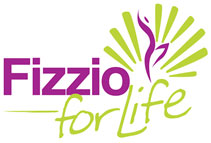Lateral Epicondylalgia (Tennis Elbow) | Medial Epicondylalgia (Golfer’s Elbow) | Medial Collateral Ligament Injury | Lateral Collateral Ligament Injury | Radial Head Fracture
Lateral Epicondylalgia (Tennis Elbow)
Lateral epicondylalgia is an overuse injury which affects the tendons of the forearm muscles at the elbow. Most commonly, pain is located on the outside of the elbow joint and is often related to work (manual labour) or sports.
Symptoms
- Pain on the outside of the elbow, which may or may not radiate up or down the arm
- Decreased wrist range of motion
- Decreased grip strength
- Decreased strength in wrist extension (bending wrist backwards)
- Difficulty carrying objects on the affected side
What might a treatment plan look like?
This will vary depending on your individual assessment and goals. An example of a treatment plan might look like:
- Physiotherapy once or twice a week for 2-3 weeks, followed by fortnightly sessions for a further 4 sessions
- Exercise physiology in the later stages of rehabilitation for work or sport-specific exercises
- Progressing to monthly physiotherapy/exercise physiology
- +/- exercise classes
- Braces and/or taping to help manage symptoms if required.
Which of our team members work with lateral epicondylalgia?
- All of our physiotherapists
- All of our exercise physiologists
Medial Epicondylalgia (Golfer’s Elbow)
Medial epicondylalgia is an overuse injury characterised by pain on the medial (inside) aspect of the elbow. It is less common than lateral epicondylalgia. It is more common in jobs that require heavy lifting and repetitive movements.
Symptoms
- Pain at the medial (inside) elbow, +/- pain radiating up or down the arm
- Decreased wrist range of motion
- Pain with gripping
- Pain with bending wrist
What might a treatment plan look like?
This will vary depending on your individual assessment and goals. An example of a treatment plan might look like:
- Physiotherapy once or twice a week for 2-3 weeks, followed by fortnightly sessions for a further 4 sessions
- Exercise physiology in the later stages of rehabilitation for work or sport-specific exercises
- Progressing to monthly physiotherapy/exercise physiology
- +/- exercise classes
- Braces and/or taping to help manage symptoms
Which of our team members work with medial epicondylalgia?
- All of our physiotherapists
- All of our exercise physiologists
Medial Collateral Ligament Injury
The medial collateral ligament runs across the elbow joint on the inside of the elbow. It is responsible for preventing movement of the forearm outwards. Medial collateral ligament injuries of the elbow are more common than lateral collateral ligament injuries.
Symptoms:
- Pain on the medial (inside) aspect of the elbow
- Decreased elbow range of motion
- +/- swelling of the elbow
- Pain with movements such as throwing a ball
What might a treatment plan look like?
This will vary depending on your symptoms, assessment, and individual goals. A treatment plan may look like:
- Physiotherapy once or twice a week for 2-3 weeks, followed by fortnightly sessions for a further 4-5 sessions.
- Exercise physiology in combination with physiotherapy to strengthen arm and shoulder, and for sport-specific exercises
- +/- exercise classes
- Braces and/or taping to manage symptoms
Which of our team members work with medial collateral ligament injuries?
- All of our physiotherapists
- All of our exercise physiologists
Lateral Collateral Ligament Injury
The lateral collateral ligament runs across the elbow joint on the outside of the elbow. It is responsible for preventing movement of the forearm inwards. Lateral collateral ligament injuries are less common than medial collateral ligament injuries.
Symptoms
- Pain lateral (outside) aspect of elbow
- Decreased range of motion
- +/- swelling
What might a treatment plan look like?
This will vary depending on your symptoms, assessment, and individual goals. A treatment plan may look like:
- Physiotherapy once or twice a week for 2-3 weeks, followed by fortnightly sessions for a further 4-5 sessions.
- Exercise physiology in combination with physiotherapy to strengthen arm and shoulder, and for sport-specific exercises
- +/- exercise classes
- Braces and/or taping to manage symptoms
Which of our team members work with lateral collateral ligament injury?
- All of our physiotherapists
- All of our exercise physiologists
Radial Head Fracture
Information coming soon…

